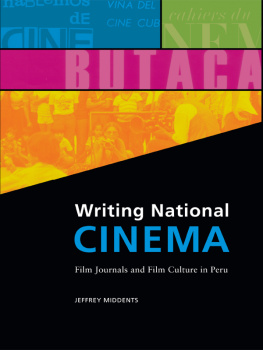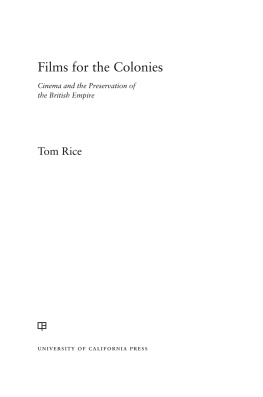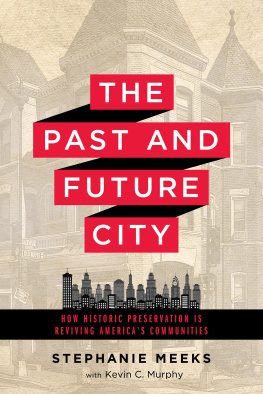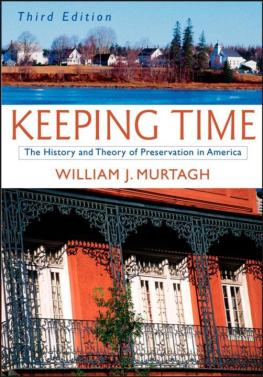Frick - Saving cinema: the politics of preservation
Here you can read online Frick - Saving cinema: the politics of preservation full text of the book (entire story) in english for free. Download pdf and epub, get meaning, cover and reviews about this ebook. City: Oxford;United States, year: 2011, publisher: Oxford University Press, Incorporated, genre: Romance novel. Description of the work, (preface) as well as reviews are available. Best literature library LitArk.com created for fans of good reading and offers a wide selection of genres:
Romance novel
Science fiction
Adventure
Detective
Science
History
Home and family
Prose
Art
Politics
Computer
Non-fiction
Religion
Business
Children
Humor
Choose a favorite category and find really read worthwhile books. Enjoy immersion in the world of imagination, feel the emotions of the characters or learn something new for yourself, make an fascinating discovery.

- Book:Saving cinema: the politics of preservation
- Author:
- Publisher:Oxford University Press, Incorporated
- Genre:
- Year:2011
- City:Oxford;United States
- Rating:5 / 5
- Favourites:Add to favourites
- Your mark:
- 100
- 1
- 2
- 3
- 4
- 5
Saving cinema: the politics of preservation: summary, description and annotation
We offer to read an annotation, description, summary or preface (depends on what the author of the book "Saving cinema: the politics of preservation" wrote himself). If you haven't found the necessary information about the book — write in the comments, we will try to find it.
Frick: author's other books
Who wrote Saving cinema: the politics of preservation? Find out the surname, the name of the author of the book and a list of all author's works by series.
Saving cinema: the politics of preservation — read online for free the complete book (whole text) full work
Below is the text of the book, divided by pages. System saving the place of the last page read, allows you to conveniently read the book "Saving cinema: the politics of preservation" online for free, without having to search again every time where you left off. Put a bookmark, and you can go to the page where you finished reading at any time.
Font size:
Interval:
Bookmark:
SAVING CINEMA
The Politics of Preservation
CAROLINE FRICK


Oxford University Press, Inc., publishes works that further
Oxford Universitys objective of excellence
in research, scholarship, and education.
Oxford New York
Auckland Cape Town Dares Salaam Hong Kong Karachi
Kuala Lumpur Madrid Melbourne Mexico City Nairobi
New Delhi Shanghai Taipei Toronto
With offices in
Argentina Austria Brazil Chile Czech Republic France Greece
Guatemala Hungary Italy Japan Poland Portugal Singapore
South Korea Switzerland Thailand Turkey Ukraine Vietnam
Copyright 2011 by Oxford University Press, Inc.
Published by Oxford University Press, Inc.
198 Madison Avenue, New York, New York 10016
www.oup.com
Oxford is a registered trademark of Oxford University Press
All rights reserved. No part of this publication may be reproduced, stored in a retrieval system, or transmitted, in any form or by any means, electronic, mechanical, photocopying, recording, or otherwise, without the prior permission of Oxford University Press.
Library of Congress Cataloging-in-Publication Data Frick, Caroline.
Saving cinema : the politics of preservation / Caroline Frick.
p. cm.
Includes bibliographical references and index.
ISBN 978-0-19-536810-9 (cloth: alk. paper)ISBN 978-0-19-536811-6 (pbk.: alk. paper) 1. Motion picture filmPreservation. 2. Motion picture filmPreservationUnited States. 3. Motion picture film collectionsUnited StatesArchival resources. I. Title.
TR886.3.F75 2010
778.58dc22 2010026797
1 3 5 7 9 8 6 4 2
Printed in the United States of America
on acid-free paper
For my parents
2 Rationales for American Film Preservation:
Defining the National
3 The American Film Heritage Movement:
Justifying the National
4 International Discourse and Global Film Heritage:
Defending the National
5 Toward a More Inclusive Film Heritage:
Challenging the National
I have long admired the writer P. G. Wodehouses ability to craft prefaces as hilarious as his novels, immediately engaging his readers into the uniquely insular fantasy world of madcap heiresses, quirky aristocrats, and crazed antiquity collectors. Wodehouses numerous collecting characters, who possess a devotion to curios beside which the lioness attachment to her cubs is tepid, have always entertained me the most. Wodehouses collectors illustrate antics that remain familiar to the moving image archiving communitya field whose ranks have always included a fair share of beloved, eccentric collectors.
This preface to Saving Cinema serves a more mundane purpose, offering a summary of my personal background and experience with archival media that informs this volume. Ever since high school, I have been interested in old movies, whether on video or celluloid or even described in a book. I was lucky to have been able to work as a volunteer at the American Film Institute offices in Washington, D.C., as a teenager. Later, in college, I also worked for the now-defunct Museum of the Moving Image in London. As an undergraduate, I interned at the Library of Congresss film preservation facility in Dayton, Ohioat the time, the site of one of the largest nitrate film collections in the world and home to many negatives of Hollywoods most iconic classics. There, I had the good fortune of speaking with David Francis, formerly with the UKs National Film and Television Archive, who was managing the Library of Congresss motion picture preservation efforts before taking the position of chief of the division in Washington.
Mr. Francis informed me of the new masters degree program in film archiving being offered at Englands University of East Anglia (UEA) and the East Anglia Film Archive, one of that nations leading regional film archives. The first of its kind in the world, the program combined traditional, critical media analysis with hands-on, practical film preservation training. The UEA program challenged my understanding of what a film actually was. In the morning, students would discuss Hitchcocks approach to suspense; by the afternoon, they were repairing sprocket holes of damaged 1930s East Anglian home movies. At UEA, film history meant not just Hollywood or British entertainment features, newsreels, and short subjects but also moving images encompassing the true breadth of material produced over time, such as advertising footage, films of 1920s horse-ploughing competitions, and industrial training material. For an American student well immersed in Hollywood history and lore fed by the rise of home video in the 1980s, my experience in the East Anglian program was acutely influential.
Upon my graduation from UEA, I worked with a variety of film-related organizations across the United States: the American Movie Classics cable channel, the Library of Congress, the National Archives, and Warner Bros. Especially during my work in programming and public events with the Library of Congress and American Movie Classics, I was able to introduce U.S. regional footage, similar to the films showcased in the East Anglian Film Archive collection, as a complement to showings of Hollywood features. Often such regional film fare proved just as popular, if not more so, than familiar Hollywood entertainment. For example, at a Library of Congress event in Boise, Idaho, a screening of a 1920s advertisement film shot in the state sold out while many seats remained for Stanley Kubricks 2001: A Space Odyssey.
My experience at one of Hollywoods most legendary companies, Warner Bros., also revealed the increasingly connected levels of film preservation efforts. As one member of a small film preservation team in Warner Bros. Technical Operations Division, I worked almost daily with international, publicly funded film archives and the largest American moving image collections. These organizations included venerable institutions such as the Museum of Modern Art, the George Eastman House, and the UCLA Film and Television Archive. At the same time, the network extended to include the nations less well-known, subnational organizations, such as Maines Northeast Historic Film, whose discovery of a small piece of film assisted with Warners partial restoration of the 1930 Lionel Barrymoredirected feature The Rogue Song.
My decision in 2000 to return to academia for a doctorate at The University of Texas at Austin, however, afforded me the unique opportunity to step away temporarily from the film archiving field and to gain some distance with which to analyze the preservation movement, the institutions within which I worked, and my own role within the field. During my doctoral program, I was energized by the work of the film community in Austin, as well as the concerning lack of scholarship related to the rich history of film and television production in the state of Texas generally. Subsequently I founded an organization inspired by the U.K. regional film archiving model in which I had been trained many years previously: the Texas Archive of the Moving Image (TAMI). The goals of this new archive were equally influenced by Austins boom in the new technology sector and the work of the media production community.
Rather than advocate for film-to-film preservation, prohibitively expensive to a start-up, entrepreneurial venture, TAMI was a twenty-first-century moving image archive in which discovery and access were seen as the only method with which to resurrect and preserve a relatively lost media history. The archived media took a variety of forms, such as West Texas home movies, Austins student (and slacker) films, and the incredible range of industrial and commercial filmmaking in Dallas and Houston. In partnership with the Texas Film Commission, TAMI has been traveling across the state with a bring out your films campaign, called the Film Round-Up, inspired by pioneering efforts in Australia and New Zealand. Unlike these earlier iterations, however, TAMIs Film Round-Up embraces moving images on all formats, film and video, and collects them via digitization. The digital files serve as TAMIs masters, and then TAMI returns the original film or video to individual families or organizations along with educational materials on how to preserve the artifacts. The archive then adds the digital file to its curated online library, available free to the public at www.texasarchive.org. When I first fell in love with old Cary Grant movies as a teenager in Kansas City, I never thought my path would take me into a strange world of Mary Kay Cosmetics training films, silent footage of snake wrangling on the Texas-Mexico border, or home movies of oil millionaires sailing with their pet lions outside Corpus Christi.
Next pageFont size:
Interval:
Bookmark:
Similar books «Saving cinema: the politics of preservation»
Look at similar books to Saving cinema: the politics of preservation. We have selected literature similar in name and meaning in the hope of providing readers with more options to find new, interesting, not yet read works.
Discussion, reviews of the book Saving cinema: the politics of preservation and just readers' own opinions. Leave your comments, write what you think about the work, its meaning or the main characters. Specify what exactly you liked and what you didn't like, and why you think so.





